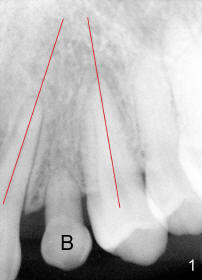
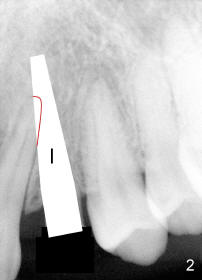
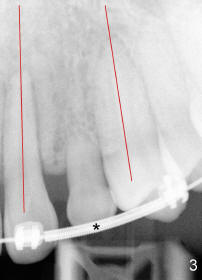
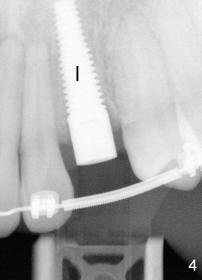
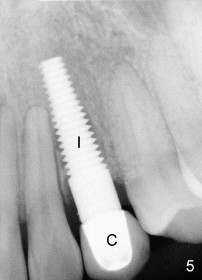
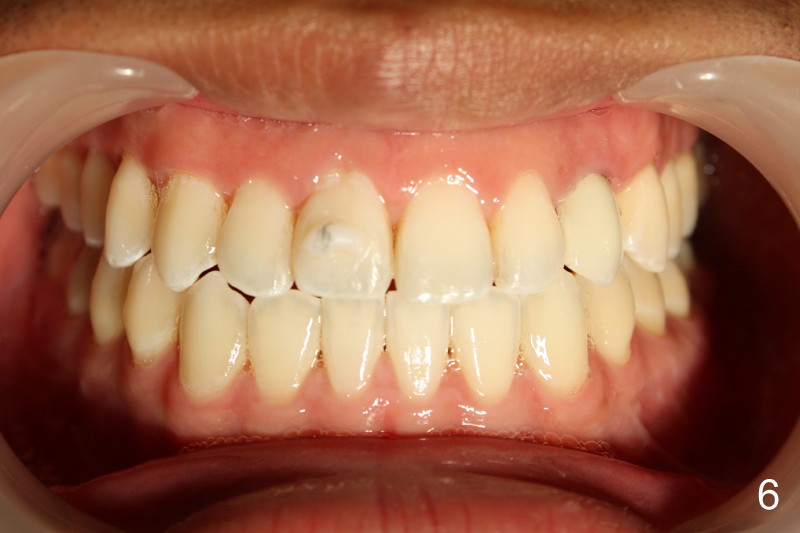
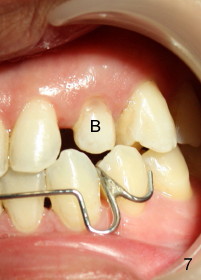
 |
 |
 |
 |
 |
 |
 |
|
Dental Education Lecture: Braces before Implant
James is 20 years old. He just finishes braces. One of his upper permanent canines is congenitally missing (never forms). This adult tooth is the longest in our mouth. The plan is to take out the baby canine with short root (B in Fig.1,7) and place an implant as long as possible. However, the roots of the two neighboring teeth are not straight (red lines in Fig.1). There is not enough space for implant placement. If a long implant were placed (I in Fig.2), one of the root tips might be damaged (red outline).
We have to let James have braces again (* in Fig.3). In 7 months, the roots of the neighboring teeth are much straighter (compare Fig.1,3). This beautiful work is done by Dr. Liliana Megra (an orthodontist). Besides, James feels that his bite is better.
After removal of the baby tooth, an implant (I in Fig.4) is immediately placed, without damaging the roots of the neighboring teeth. How sweet it is.
It is sweeter that a crown is seated 5 months later (C in Fig.5). Can you guess which tooth has the new crown in Fig.6? Fig.7 is a photo taken before treatment. B stands for the baby canine to be replaced. The wire on the bottom portion of the photo is called retainer. James is a good boy, wearing retainers day and night.
Xin Wei, DDS, PhD, MS 1st edition 03/27/2011, last revision 09/12/2018